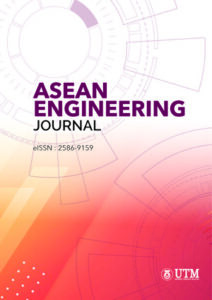FACTORS AFFECTING THE THICKNESS OF REPLACEMENT LAYER ON MEDIUM CLAY
DOI:
https://doi.org/10.11113/aej.v11.18035Keywords:
Clay, Cost, Foundation, Optimization model, Replacement thickness, Settlement, Soil replacementAbstract
Soil replacement is a common technique that can be used to increase the soil bearing capacity and reduce the expected settlement. The thickness of replacement layer depends on many factors such as: the applied stress, original soil properties, material of replacement layer and the cost of foundation works. However, until now the practical thickness of replacement is usually selected based on soil experts’ experience. This study proposed an optimization model to assist geotechnical engineers in predicting the optimum thickness and material type of replacement layer that satisfy the main design requirements, i.e. bearing capacity, consolidation settlement and cost considerations at the same time. The Evolutionary solving method that uses a variety of genetic algorithm and local search methods was used to solve the research problem. Furthermore, the effect of the thickness and properties of clay layer and the depth of ground water table on determining optimum type and thickness of replacement soil were investigated. The study evaluated the relationship between the replacement layer thickness and the total direct cost of foundation works and found that, the notion of increasing replacement thickness to decrease cost limitlessly was not viable and an optimal thickness was usually achieved.
















